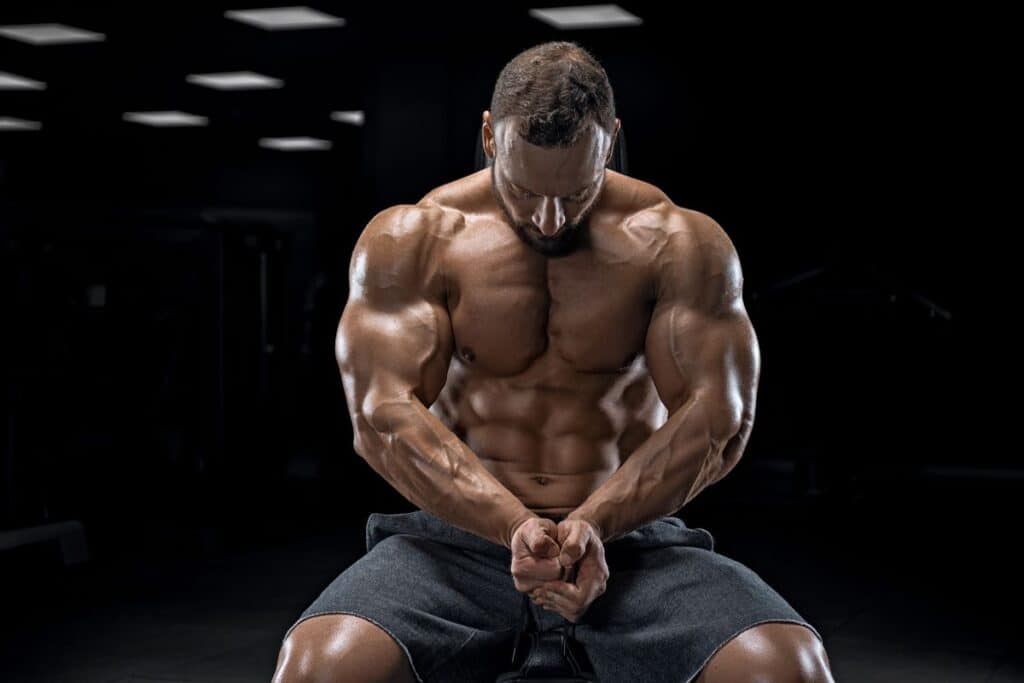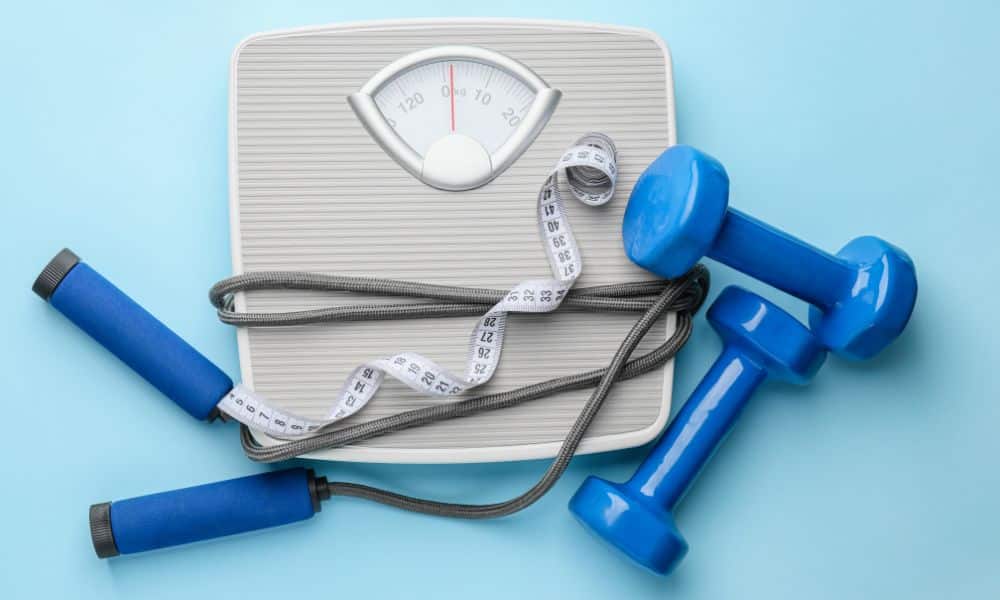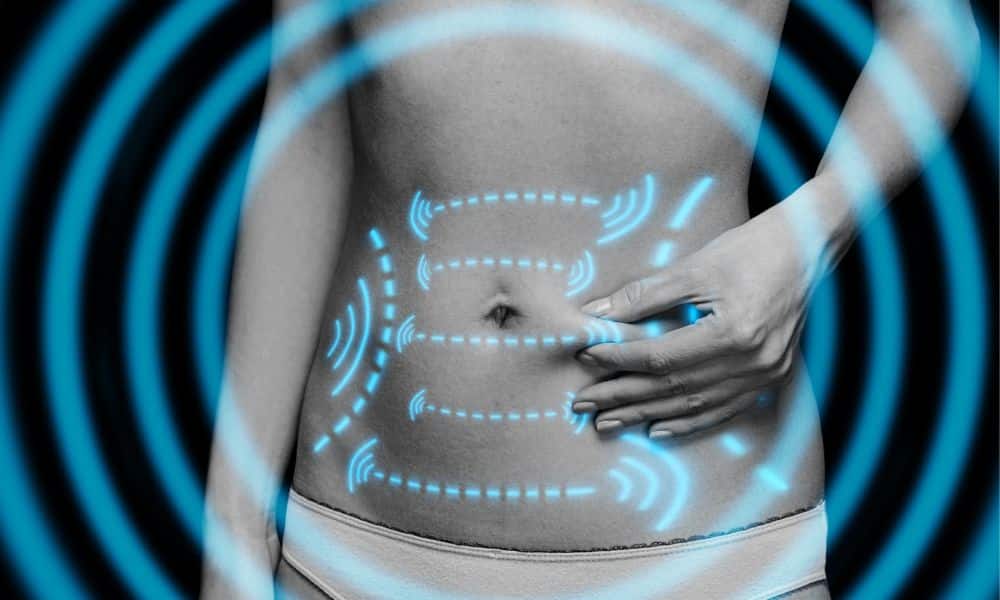Are you looking to lose chest fat in 30 days? If so, you’re in luck! This easy-to-follow plan will help you achieve your goals. The best way to lose body fat is by focusing on diet, exercise, and hormones since they determine how your body accumulates fat.
It is also important to note that you can’t target body fat in your stomach, chest, or elsewhere. Therefore you must target your overall body fat. The two things that determine how you gain body fat are calories and hormones. Thus you can control them through your diet and exercise.
Calorie Deficit
The first step is to create a calorie deficit. This means that you need to burn more calories than you consume. You can do this by eating a healthy diet and exercising regularly. When you have a calorie deficit, your body will break down stored fat for energy. This will lead to weight and chest fat loss also.
The calories you must eat daily to lose weight and chest fat will vary depending on age, sex, height, weight, and activity level. An excellent way to determine how many calories you need to eat in a day is to use a calorie calculator. Once you know how many calories you need to eat in a day, you can create a calorie deficit by eating fewer calories. You can also increase your calorie burn by exercising regularly.
It is important to note that creating a large calorie deficit is unsafe. A healthy calorie deficit is around 500-1000 calories per day. If you create a more significant calorie deficit, you may experience adverse side effects, such as fatigue, hunger, and irritability.
Here are some additional tips for creating a calorie deficit:
- Eat plenty of fruits, vegetables, and whole grains.
- Choose lean protein sources, such as chicken, fish, and beans.
- Limit processed foods, sugary drinks, and excessive amounts of alcohol.
- Get at least 30 minutes of moderate-intensity exercise most days of the week.
- Find a support system, such as a friend, family member, or online community, to help you stay motivated.
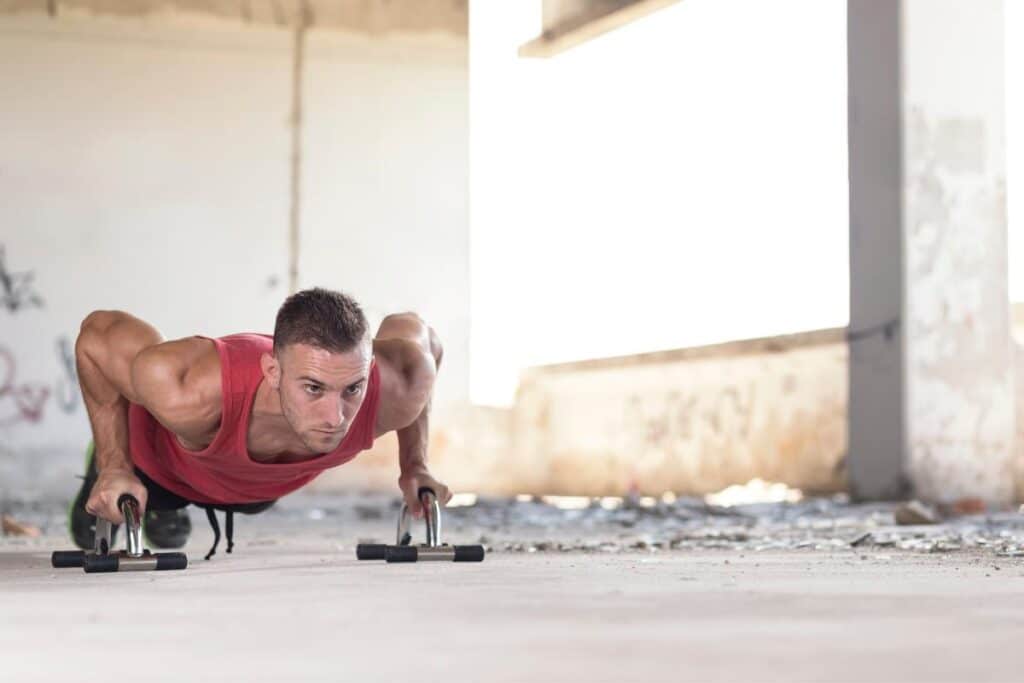
Workout
The next step is to focus on exercises that target your chest muscles. While you can’t target body fat, you can target muscles. Well-defined muscles will give the appearance of less body fat and a more fit body.
Building chest muscles through exercise requires a combination of strength training and cardio. Strength training exercises, such as push-ups, bench presses, and dumbbell flyes, help to break down muscle tissue. Cardio exercises, such as running, swimming, and biking, help to burn fat. Focusing on activities targeting the pectoralis major and pectoralis minor muscles is essential to build chest muscles. The pectoralis major is the larger of the two muscles and is responsible for most of the chest’s size. The pectoralis minor is a smaller muscle that helps to support the pectoralis major and adds definition to the chest.
Using challenging but not too heavy weights is essential when performing strength training exercises. You should be able to complete 8-12 repetitions of each exercise with good form. As you get stronger, you can gradually increase the weight or the number of repetitions. Focusing on proper form when performing strength training exercises is also essential. This will help prevent injuries and ensure you get the most out of your workout. In addition to strength training, cardio is vital to building chest muscles. Cardio helps burn fat, which can help reveal the muscles you have created through strength training.
Focusing on high-intensity interval training (HIIT) is essential to get the most out of your cardio workouts. HIIT involves alternating between short bursts of intense exercise and periods of rest or low-intensity exercise. HIIT is a great way to burn fat and build muscle.
Following these tips, you can build chest muscles through exercise and achieve your desired body.
Here are some additional tips for building chest muscles:
- Get enough protein. Protein is essential for muscle growth. Aim to eat 1-1.5 grams of protein per pound of body weight each day.
- Get enough sleep. Sleep is when your body repairs and rebuilds muscle tissue. Aim for 7-8 hours of sleep each night.
- Stay hydrated. Hydration is vital for muscle function and recovery. Aim to drink plenty of water throughout the day.
- Manage stress. Stress can interfere with muscle growth. Find healthy ways to manage stress, such as exercise, yoga, or meditation.
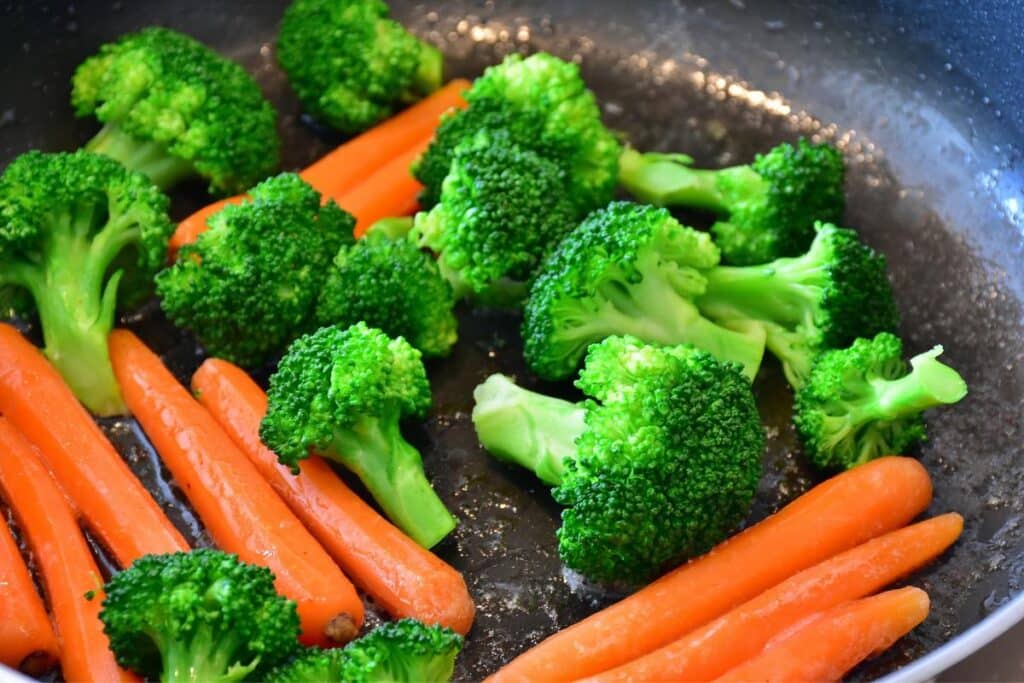
Diet
The next step is to focus on a diet that causes fat loss and improves hormones. Hormones are chemical messengers vital in regulating many bodily functions, including metabolism, appetite, and weight. When hormones are out of balance, it can lead to various health problems, including weight gain, difficulty losing weight, and hormonal imbalances. Many things can contribute to hormonal imbalance, including stress, poor diet, lack of exercise, and certain medications. However, one of the most important things you can do to regulate hormones and burn body fat is to eat a healthy diet.
A healthy diet for hormone regulation and fat loss should include plenty of fruits, vegetables, and whole grains. These foods are packed with nutrients that support hormone production and function. It is also important to limit processed foods, sugary drinks, and excessive amounts of alcohol. These foods can disrupt hormone balance and make it difficult to lose weight.
In addition to eating a healthy diet, it is also essential to get regular exercise. Exercise helps to regulate hormones and burn body fat. Aim for at least 30 minutes of moderate-intensity exercise most days of the week. Following these tips can improve your hormone balance and burn body fat. This can help you achieve your weight loss goals and improve your overall health.
Here are some additional tips for regulating hormones and losing chest fat:
- Get enough sleep. Sleep is when your body repairs and produces hormones. Aim for 7-8 hours of sleep each night.
- Manage stress. Stress can disrupt hormone balance. Find healthy ways to manage stress, such as exercise, yoga, or meditation.
- Avoid processed foods. Processed foods are often high in sugar, unhealthy fats, and calories. These foods can disrupt hormone balance and make it difficult to lose weight.
- Limit sugary drinks. Sugary drinks are high in calories and can contribute to weight gain. Aim to drink water or unsweetened tea instead.
- Eat plenty of fiber. Fiber helps to keep you feeling full and can help you lose weight. Good sources of fiber include fruits, vegetables, and whole grains.
- Get enough protein. Protein is essential for building and maintaining muscle mass. Muscle tissue helps to burn calories, even at rest. Aim to eat 1-1.5 grams of protein per pound of body weight each day.
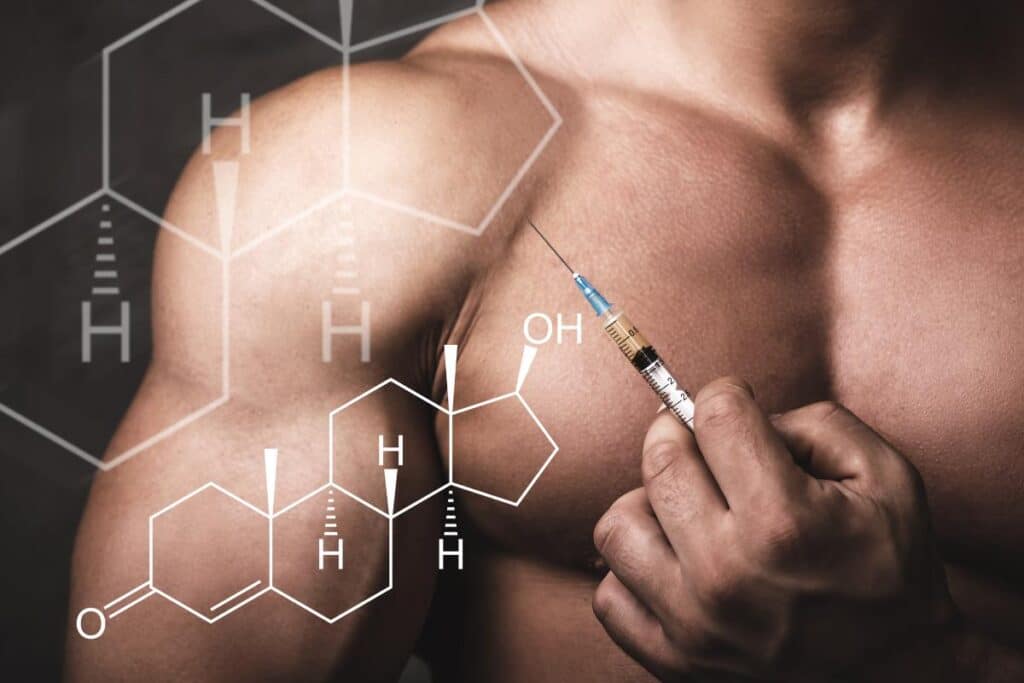
Supplements and Drugs
Consult your doctor before taking supplements or drugs. Supplements and drugs can affect hormones and chest fat in several ways. Some supplements, such as testosterone boosters, can increase testosterone levels. Testosterone is a hormone that plays a role in muscle growth and fat loss. Other supplements, such as fish oil, can help to reduce inflammation. Inflammation can contribute to the development of chest fat.
Some drugs, such as statins, can also affect hormones and chest fat. Statins are drugs that are used to lower cholesterol. Cholesterol is a type of fat that is found in the body. High levels of cholesterol can contribute to the development of chest fat. It is important to note that supplements and drugs can have side effects. Talking to your doctor before taking any supplements or drugs is essential.
Here are some of the potential side effects of supplements and drugs that affect hormones and chest fat:
- Testosterone boosters: Increased heart disease, stroke, and prostate cancer risk.
- Fish oil: Increased risk of bleeding.
- Statins: Increased risk of muscle pain, liver damage, and memory problems.
It is crucial to weigh the risks and benefits of taking supplements or drugs.
Here are some additional tips for reducing chest fat:
- Eat a healthy diet. A healthy diet should be low in calories and fat. It should also be high in fiber, protein, and fruits and vegetables.
- Get regular exercise. Exercise helps to burn calories and build muscle. Muscle tissue helps to burn calories, even at rest.
- Get enough sleep. Sleep is when your body repairs and produces hormones. Aim for 7-8 hours of sleep each night.
- Manage stress. Stress can disrupt hormone balance. Find healthy ways to manage stress, such as exercise, yoga, or meditation.
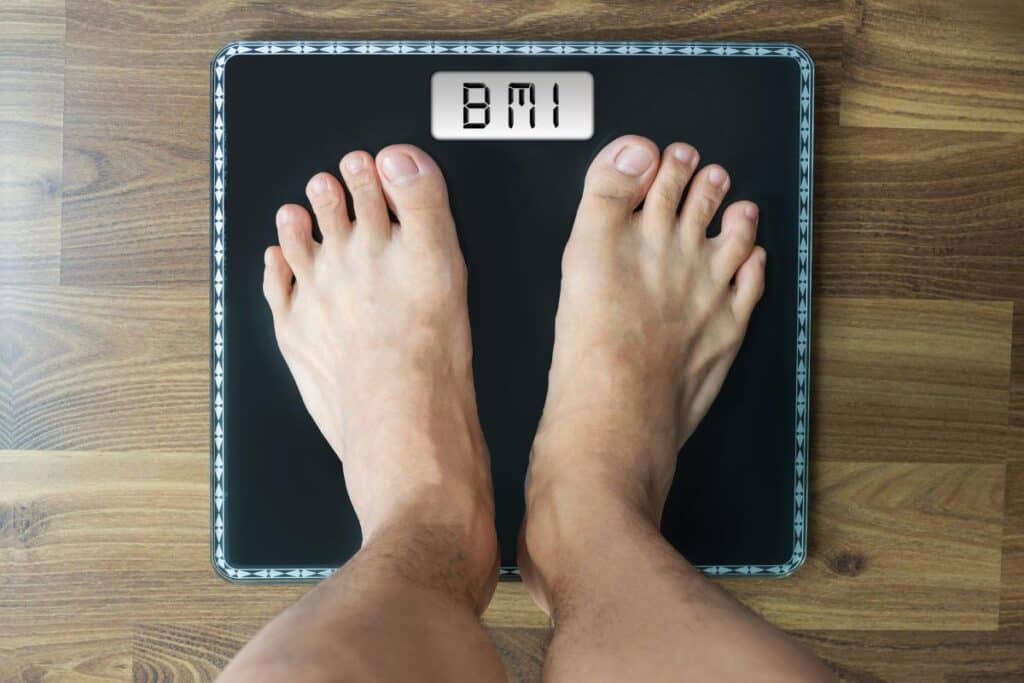
Patience
Finally, be patient and consistent. Losing chest fat takes time and effort, but being patient and consistent with your diet and exercise routine is essential. With time and effort, you will reach your fat loss goals.
By taking a healthy approach that involves a nutritious diet, 30 minutes of exercise, sleep, and an active lifestyle, your body will look healthy and fit in no time. Also, don’t take shortcuts. Some supplements and drugs can have adverse side effects on your hormones which could lead to storing extra body fat in unwanted areas.
While steroids and testosterone boosters can increase the amount of testosterone in your body, they can also increase the amount of estrogen, leading to chest fat. Therefore taking your time and building a healthy and fit body may take a little longer but will not lead to complications are longer-term problems.
Conclusion on How to Lose Chest Fat in 30 Days
Losing chest fat can be challenging, but it is possible with a combination of diet and exercise. Here are some tips to help you lose chest fat in 30 days:
- Eat a healthy diet. This means eating plenty of fruits, vegetables, and whole grains. It also means limiting processed foods, sugary drinks, and excessive amounts of alcohol.
- Get regular exercise. This includes cardio and strength training exercises. Cardio helps to burn calories, while strength training helps to build muscle.
- Get enough sleep. When you sleep, your body repairs itself and produces hormones that help with weight loss. Aim for 7-8 hours of sleep each night.
- Manage stress. Stress can lead to unhealthy eating habits and weight gain. Find healthy ways to manage stress, such as exercise, yoga, or meditation.
If you follow these tips, you can lose chest fat in 30 days. However, it is essential to remember that everyone is different, and results may vary. Please talk to your doctor if you have any concerns about your weight or health.
Here are some additional tips that may help you lose chest fat:
- Set realistic goals. Don’t expect to lose too much weight too quickly. Aim to lose 1-2 pounds per week.
- Be patient. Losing weight takes time and effort. Don’t get discouraged if you don’t see results immediately.
- Find a support system. Having friends or family members trying to lose weight can help you stay motivated.
By following these tips, you can lose chest fat and achieve your desired body. If you are on a weight loss journey, share this article on Facebook or Twitter to help others learn more about losing weight.

